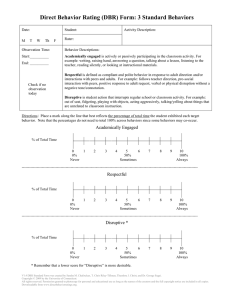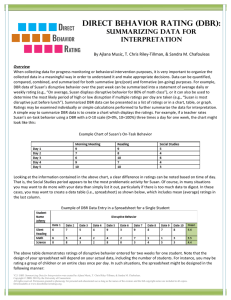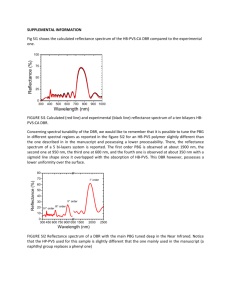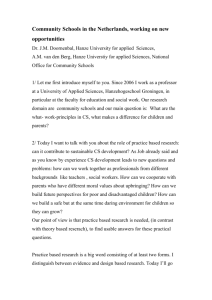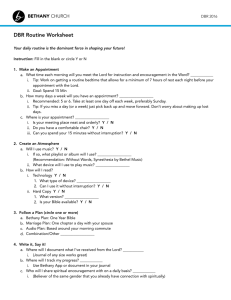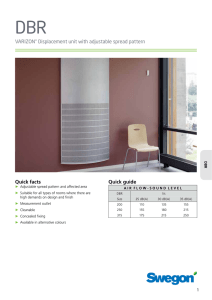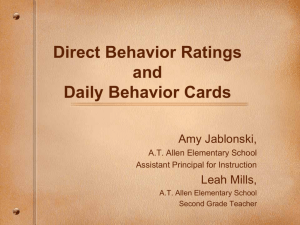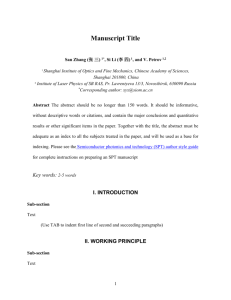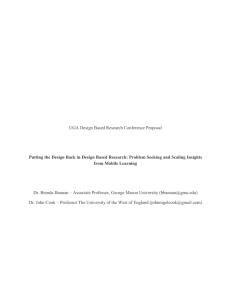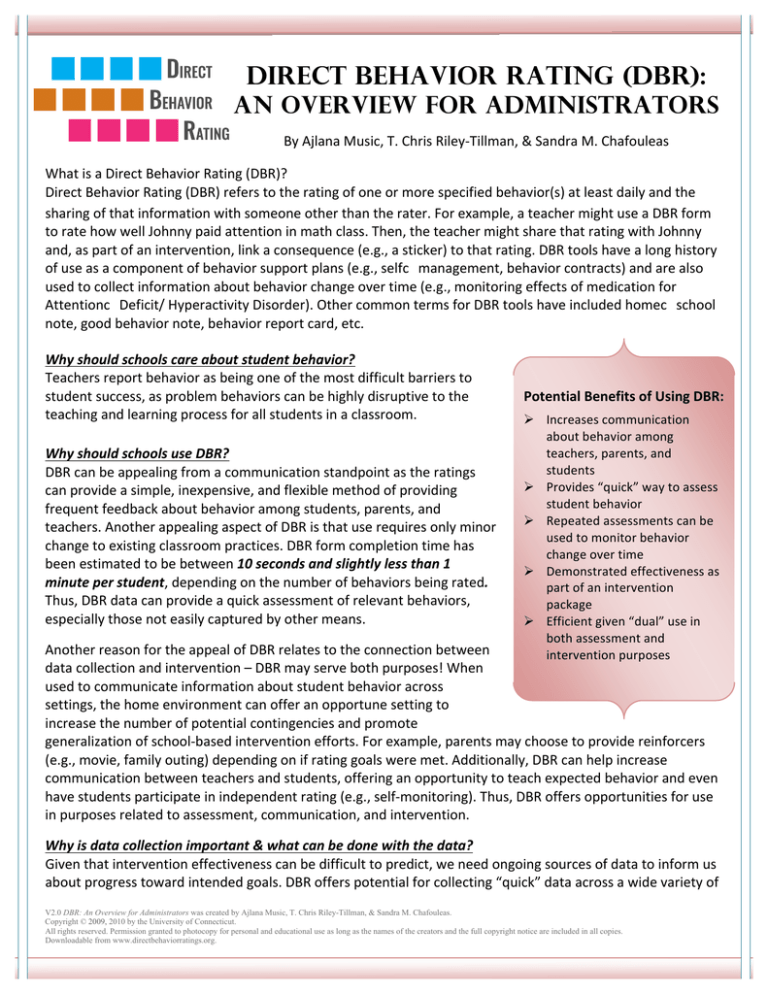
Direct Behavior Rating (DBR):
An Overview for ADMINISTRATORS
By Ajlana Music, T. Chris Riley-­‐Tillman, & Sandra M. Chafouleas What is a Direct Behavior Rating (DBR)?
Direct Behavior Rating (DBR) refers to the rating of one or more specified behavior(s) at least daily and the
sharing of that information with someone other than the rater. For example, a teacher might use a DBR form to rate how well Johnny paid attention in math class. Then, the teacher might share that rating with Johnny and, as part of an intervention, link a consequence (e.g., a sticker) to that rating. DBR tools have a long history of use as a component of behavior support plans (e.g., selfc management, behavior contracts) and are also used to collect information about behavior change over time (e.g., monitoring effects of medication for Attentionc Deficit/ Hyperactivity Disorder). Other common terms for DBR tools have included homec school note, good behavior note, behavior report card, etc. Why should schools care about student behavior? Teachers report behavior as being one of the most difficult barriers to student success, as problem behaviors can be highly disruptive to the teaching and learning process for all students in a classroom. Why should schools use DBR? DBR can be appealing from a communication standpoint as the ratings can provide a simple, inexpensive, and flexible method of providing frequent feedback about behavior among students, parents, and teachers. Another appealing aspect of DBR is that use requires only minor change to existing classroom practices. DBR form completion time has been estimated to be between 10 seconds and slightly less than 1 minute per student, depending on the number of behaviors being rated. Thus, DBR data can provide a quick assessment of relevant behaviors, especially those not easily captured by other means. Potential Benefits of Using DBR: Ø Increases communication about behavior among teachers, parents, and students Ø Provides “quick” way to assess student behavior Ø Repeated assessments can be used to monitor behavior change over time Ø Demonstrated effectiveness as part of an intervention package Ø Efficient given “dual” use in both assessment and intervention purposes Another reason for the appeal of DBR relates to the connection between data collection and intervention – DBR may serve both purposes! When used to communicate information about student behavior across settings, the home environment can offer an opportune setting to increase the number of potential contingencies and promote generalization of school-­‐based intervention efforts. For example, parents may choose to provide reinforcers (e.g., movie, family outing) depending on if rating goals were met. Additionally, DBR can help increase communication between teachers and students, offering an opportunity to teach expected behavior and even have students participate in independent rating (e.g., self-­‐monitoring). Thus, DBR offers opportunities for use in purposes related to assessment, communication, and intervention. Why is data collection important & what can be done with the data? Given that intervention effectiveness can be difficult to predict, we need ongoing sources of data to inform us about progress toward intended goals. DBR offers potential for collecting “quick” data across a wide variety of V2.0 DBR: An Overview for Administrators was created by Ajlana Music, T. Chris Riley-Tillman, & Sandra M. Chafouleas.
Copyright © 2009, 2010 by the University of Connecticut.
All rights reserved. Permission granted to photocopy for personal and educational use as long as the names of the creators and the full copyright notice are included in all copies.
Downloadable from www.directbehaviorratings.org.
cases. Obtained data can then be quantified and compared for both summative (pre/post) and formative (on-­‐
going) assessment purposes. For example, DBR data of Susie’s disruptive behavior over the past week can be summarized into a statement of average rating (e.g., 6 out of 10 points) or be used to determine the most likely period of high or low disruption if multiple ratings per day are taken (e.g., just before lunch). Data are summarized relevant to the DBR scale used to rate behavior. For example, rating information might be plotted on a line graph, with the gradients along the y-­‐axis showing the DBR scale (e.g., 0-­‐10) and observation period on the x-­‐axis (e.g., Monday, Tuesday, etc.). What can DBR look like? As previously noted, DBR formats can be flexibly designed to accommodate a wide variety of situations. DBR has been used across a range of behaviors, ages, grades, etc. The examples below present just a few options for designing DBR to be appropriate at different grade levels. Example 1: Susan’s teacher is estimating the percentage of time that Susan is engaged during independent math
work.
Academically
Engaged
0
0%
Never
1
2
3
4
5
50%
Sometimes
6
7
8
9
10
100%
Always
In this example, Susan displayed academically engaged behavior 70% of the total observation period.
Example 2: Sam’s teacher is rating how well Sam gets along with peers during playtime.
Getting Along
with Peers
In this example, Sam was rated as getting along very well with his peers.
How does our school get started using DBR? Work with your school-­‐based intervention team to review information on how to establish procedures for using, summarizing, and interpreting DBR data (see www.directbehaviorratings.org). For example, begin by presenting a brief introduction regarding steps to use the DBR. Next, have the intended users (e.g., teachers) practice making ratings using DBR. An online training module is provided at no cost on the DBR website for this purpose. The training module presents users with an overview of DBR and allows them to practice making ratings and receive feedback on their accuracy. Once your data collection has begun, establish who will summarize the data and how it will be presented. Finally, determine a process for consistent data review, including decisions regarding when to consider implementing or modifying behavior supports. V2.0 DBR: An Overview for Administrators was created by Ajlana Music, T. Chris Riley-Tillman, & Sandra M. Chafouleas.
Copyright © 2009, 2010 by the University of Connecticut.
All rights reserved. Permission granted to photocopy for personal and educational use as long as the names of the creators and the full copyright notice are included in all copies.
Downloadable from www.directbehaviorratings.org.

